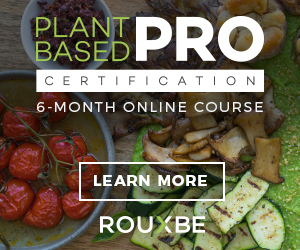How to select pasta
There are many different types of pasta available. You can purchase fresh or dried pasta, but most often, you'll see one type of pasta in your grocery store.

Pasta is an excellent source of protein, fiber, and calcium. The quality of the ingredients used to create the finished product will determine how good it tastes and how long it lasts before going bad.
The ingredients in making pasta are flour, eggs, and salt.
The ingredients in making pasta are flour, eggs, and salt.
Flour is used to make a dough that's rolled out into sheets. The sheets are then cut into noodles with a knife or scissors. These noodles can be dried before use if you want them to last longer than fresh homemade ones.
Most pasta is made from semolina flour, a grain milled from hard durum wheat.
Most pasta is made from semolina flour; a grain milled from hard durum wheat.
Semolina is the endosperm of durum wheat that has been processed to remove some of its natural bran and germ. This process produces white flour with an unusually high protein content (about 10%) and an extremely low gluten content (less than 1%). In addition to being used in pasta production, semolina can be used as animal feed or as an ingredient in baked goods such as cookies and cakes.
Semolina flour contains a large amount of gluten, which gives it a high tensile strength.
Semolina flour, the main ingredient in semolina pasta, contains a large amount of gluten. Gluten is a protein found in wheat that provides elasticity and strength to the dough. When you knead your dough with semolina flour, you'll notice that it becomes very sticky as it comes together into one solid mass. Gluten makes up approximately 70% of all grain proteins—making it an essential ingredient for pasta.
To make pasta dough, you mix together the ingredients and then knead the mixture by hand or in a mixer until it becomes firm enough to form into sheets.
To make pasta dough, mix the ingredients and then knead the mixture by hand or in a mixer until it becomes firm enough to form into sheets. The length of time that you should knead depends on how wet your ingredients were when they were measured out. The more water content there is (and thus less flour consistency), the longer it will take for your dough to become firm enough for rolling out and cutting into shapes.
You can use either a stand mixer or hand-kneading method; both methods work well with this recipe but keep in mind that if you're using one type of machine instead of another, some steps may be different!
If you're making fresh pasta, then you will cut the dough into strips with a pasta machine or a knife for homemade noodles.
The most common way to do this is by using a pasta machine to roll out the dough and cut it into strips. Another option for cutting the dough into strips is a pizza cutter (or any similarly sized blade).
If you have some time on hand and want to make sure that your pasta isn't going to dry out during cooking, try soaking it in lightly salted water for 10 minutes before cooking it—this will help keep it from getting hard while cooking.
To make dried pasta, you must dry it before using it.
The drying process is the last step in the manufacturing process, and it's essential for several reasons:
It prevents spoilage by removing excess moisture from the pasta. This can prevent mold from growing on your pasta or other food items stored near or in contact with them (like rice).
Drying helps to make your product more shelf stable so that it doesn't go bad quickly when stored at room temperature—something we all want to avoid!
Dry-dried noodles also tend to have a greater flavor than wet ones due to their increased exposure to air while they're being dried out; this gives them an excellent taste profile which makes them perfect for many different types of dishes!
Quality dried pasta is like quality dried rice – it should be uniform in color and texture without any split ends or rust spots.
When you buy pasta, it should be uniform in color and texture. If the pasta is uneven in texture, then it is likely to break when you are cooking with it. If the pasta has split ends or rust spots, it is likely to be old and stale.
Wondering how you can tell if your dried pasta is good quality? Look for freshness by checking for these qualities:
Uniformity of Color – The pasta should have an even color throughout (no brown spots). This means there may be dye used during production; however, most manufacturers use natural dyes, which won't affect the taste or texture of their product.
Consistency – The product should not feel crumbly when squeezed between two fingers; instead, there should be just enough resistance that lets us know it's still solid but flexible enough not to break apart easily during cooking. Moisture Content - Dried pasta should have no visible moisture droplets after being pressed against paper towel with finger pressure applied evenly across all surfaces (this includes both sides).
Ingredients and texture are important features when selecting pasta products.
Dried pasta is made from durum wheat semolina, the same flour used to make pizza dough. It has a characteristic color that's usually uniform throughout the package (the better-quality brands will have a yellowish hue). It also comes in various shapes: short tubular strands called fettuccine, long tubes called spaghetti, flat rectangles called linguine, and even sheets like lasagna noodles.
Conclusion
Pasta is a versatile food that can be used in many different ways. It's easy to prepare and tastes delicious when cooked correctly. If you're looking for an easy way to add more fiber to your diet, then try using pasta instead of rice or other grains.




